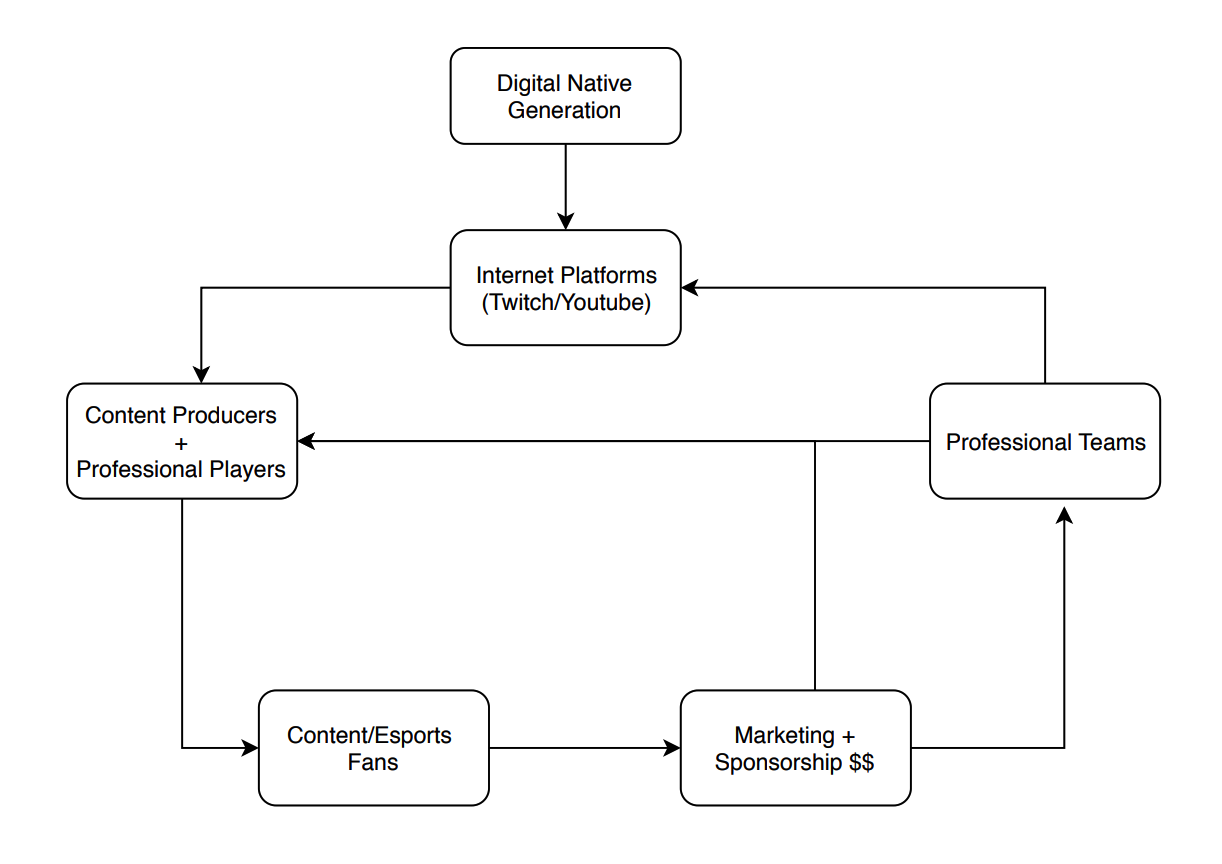I’ve believed for a long time that esports are part of the mainstream future. To me, it exists in the center of a generational change of digital natives and supporting platforms. Like with any nascent industry, it can change quickly. I would like to post my thoughts on these changes, but to do that I believe I have to lay some groundwork down first.
To that end, I have written a four part position paper. This first part will serve as an abstract for the following sections. It outlines the reasons I believe in the industry and why it can overcome the challenges that comes. I will explain the division of the following three sections at the end of the this article.
Esports: Then and Now
The concept of playing video games professionally has been around for several decades, but it hasn’t gained international traction until recently. The first nation-wide gaming tournament was the ‘Red Annihilation’ event in 1997. The winner of the event walked away with a Ferrari, but the event failed to catch on.
The first country to adopt gaming as a national pastime was South Korea with the release of Star Craft: Brood Wars in 1999. By the early 2000s conglomerates Samsung and SK Telecom had sponsored teams that captivated the attention of the entire nation. Gamers were treated as celebrities, and their matches were shown on TV. However, western players were never able to really challenge the Korean players, and it failed to gain international attention.
This changed with the introduction of League of Legends in 2008. Well, it really only changed in 2010 with the Season 2 World Championship for reasons I’ll go over shortly. Bolstered by the professional league, League of Legends brought in $2.1 billion of revenue in 2017 even though the game was free to download and free to play. This success has been replicated by Activision Blizzard when they started a professional Overwatch league. The first twelve spots in their franchised league sold for $250 million.
So what changed?
I think there were a few key technological and social changes that make esports practical, possible, and valuable now and in the future. Obviously the internet helps, but it’s the secondary effects of the internet that I’m more interested in. These secondary effects created a reinforcing system that I believe will ensure that esports will become part of the norm rather than the other.
I’ve diagrammed my thought process below.

As internet usage became more commonplace it gave rise to a digital native generation that embraces esports and online interactions. It also provided the platforms necessary for players and content creators to nurture followers. These followers turned into emotionally invested fans, which in turn brought in sponsorships for players and teams.
The additional money helped the industry professionalize, which in turn stabilized the entire ecosystem. As the industry stabilized it made it more attractive for large corporations to sponsor. This positive feedback loop has led to esports as a whole exploding in the last few years, and I believe we have a couple of decades of growth left.
I have divided up this position paper into four separate sections, each dealing with a different part of the diagram. The next section will discuss why a digital native generation matters, and why the esport industry could only ever have existed now and in the future. The third section addresses the economics of the esport industry and the final section outlines the potential challenges it faces.